South Korea has become a go-to destination for international productions. Its capital, Seoul, offers an impressive range of filming locations — ideal for capturing visually striking B-rolls that blend tradition and modernity.
While principal shots are usually carefully scheduled, B-rolls often end up being improvised and shot under time pressure. Still, with proper preparation, it’s possible to avoid last-minute issues and optimize your filming schedule. Some locations require prior authorization, while others have restricted access during specific hours.
Explore these 10 filming locations we recommend for any filming crew planning to shoot impactful B-rolls in Seoul.
Top 10 Filming Locations in Seoul (South Korea) for Your B-Roll Footage:
- Seokchon Lake – A Peaceful Natural Space in Urban Seoul
- Sungnyemun Gate – A Historic Gate in the Heart of Seoul
- Gwangjang Market – The Vibrant Atmosphere of Korean Street Food
- Bukchon Hanok Village – The Charm of a Traditional Korean Village
- Gangnam Station – The Urban Energy of Seoul’s Gangnam District
- Gyeongbokgung Palace – South Korea’s Royal Heritage
- N Seoul Tower – A Panoramic View Over the City
- Naksan Park – A Stunning View Along Seoul’s Fortress Walls
- Dongdaemun Design Plaza – A Futuristic Architectural Masterpiece
- Cheonggyecheon Stream – A Green Walkway Through the Urban Jungle
1. Seokchon Lake (석촌호수) – A Peaceful Natural Space in Urban Seoul
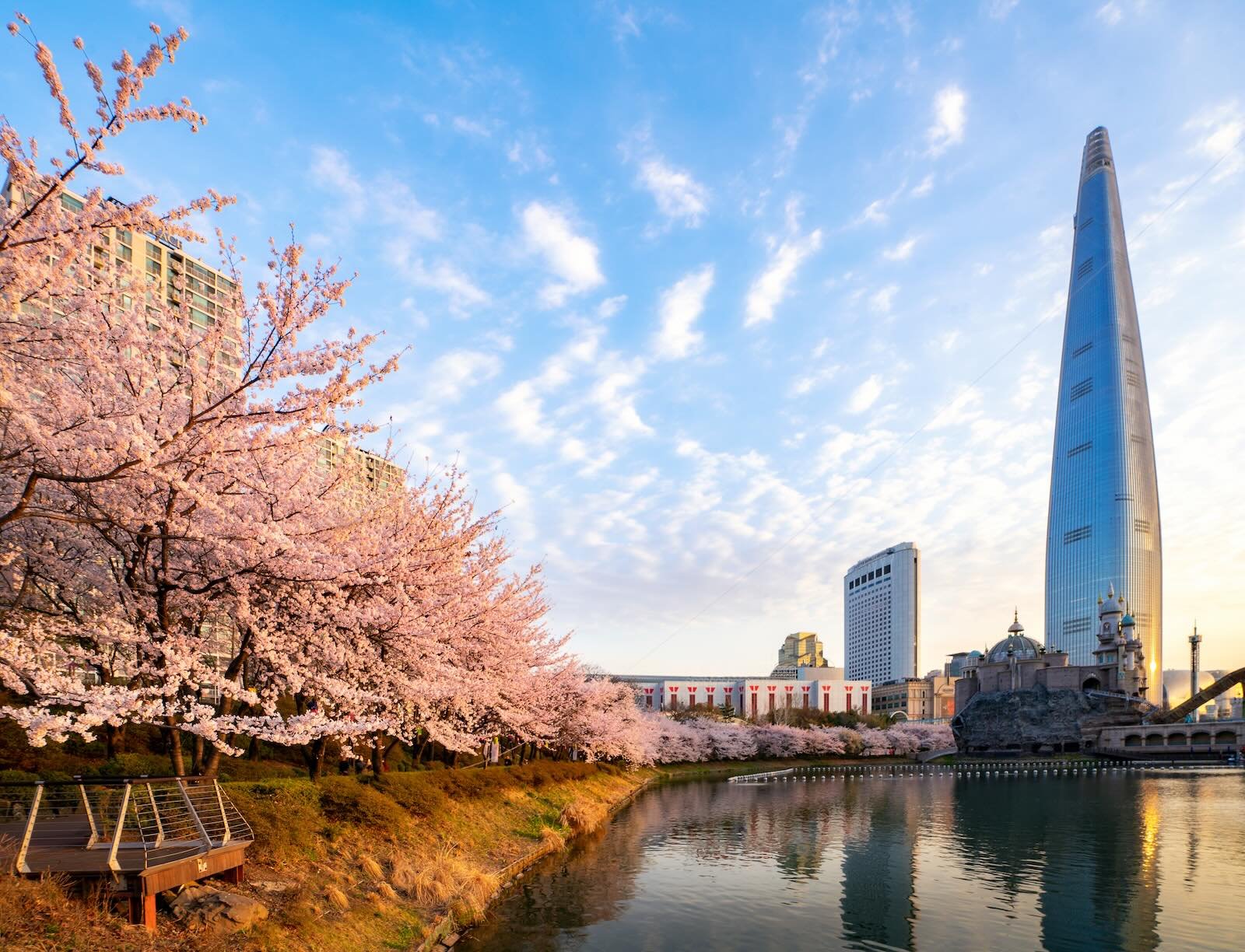
Located in the Songpa district, Seokchon Lake is one of the few bodies of water in Seoul. This artificial lake is divided into two distinct sections — East and West — separated by the towering Lotte World Tower, which dominates the skyline and serves as a strong visual anchor for capturing a variety of atmospheres throughout the year.
The lake is surrounded by wide pedestrian paths, small bridges, benches, and tree-filled areas. Its appearance changes dramatically with the seasons. In spring, it becomes a popular destination during the cherry blossom season, when the lakeside transforms into a pink corridor. In autumn, the foliage turns vivid shades of yellow and orange — perfect for warm, high-contrast footage.
2. Sungnyemun Gate (숭례문) – A Historic Gate in the Heart of Seoul
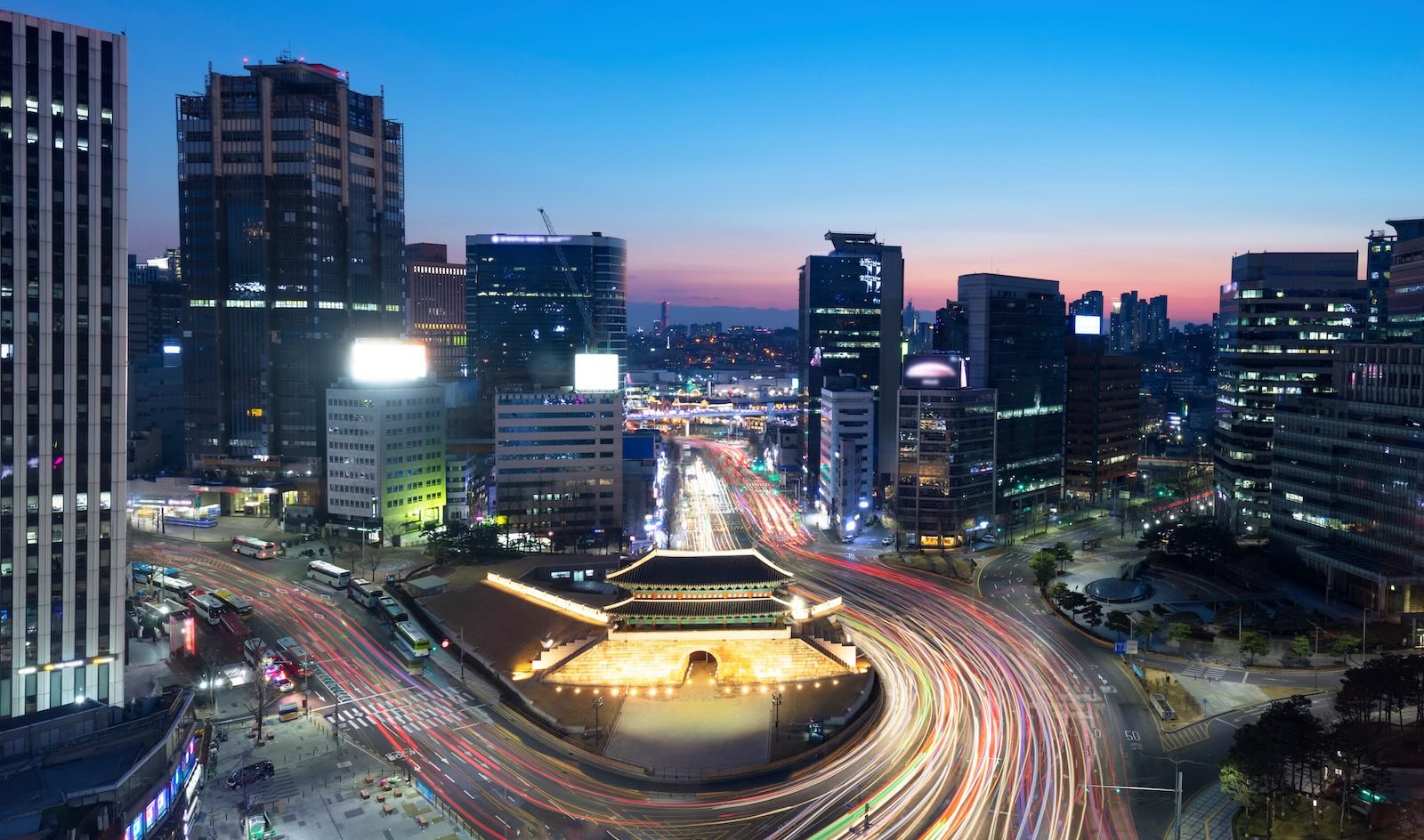
Also known as Namdaemun, Sungnyemun Gate is one of the most iconic landmarks in Seoul. Designated as South Korea’s National Treasure No. 1, this former gate of the city’s fortress wall stands as a true relic of the past, right in the heart of the modern city, in the Jung-gu district.
Surrounded by skyscrapers and a constant flow of traffic, it embodies a striking contrast between past and present. Its traditional architecture — a blend of wood and stone — makes it an ideal subject for capturing Seoul’s historical identity within a contemporary urban setting. This dual visual reading offers bold, high-contrast imagery that adds depth and narrative to any sequence.
3. Gwangjang Market (광장시장) – The Vibrant Atmosphere of Korean Street Food
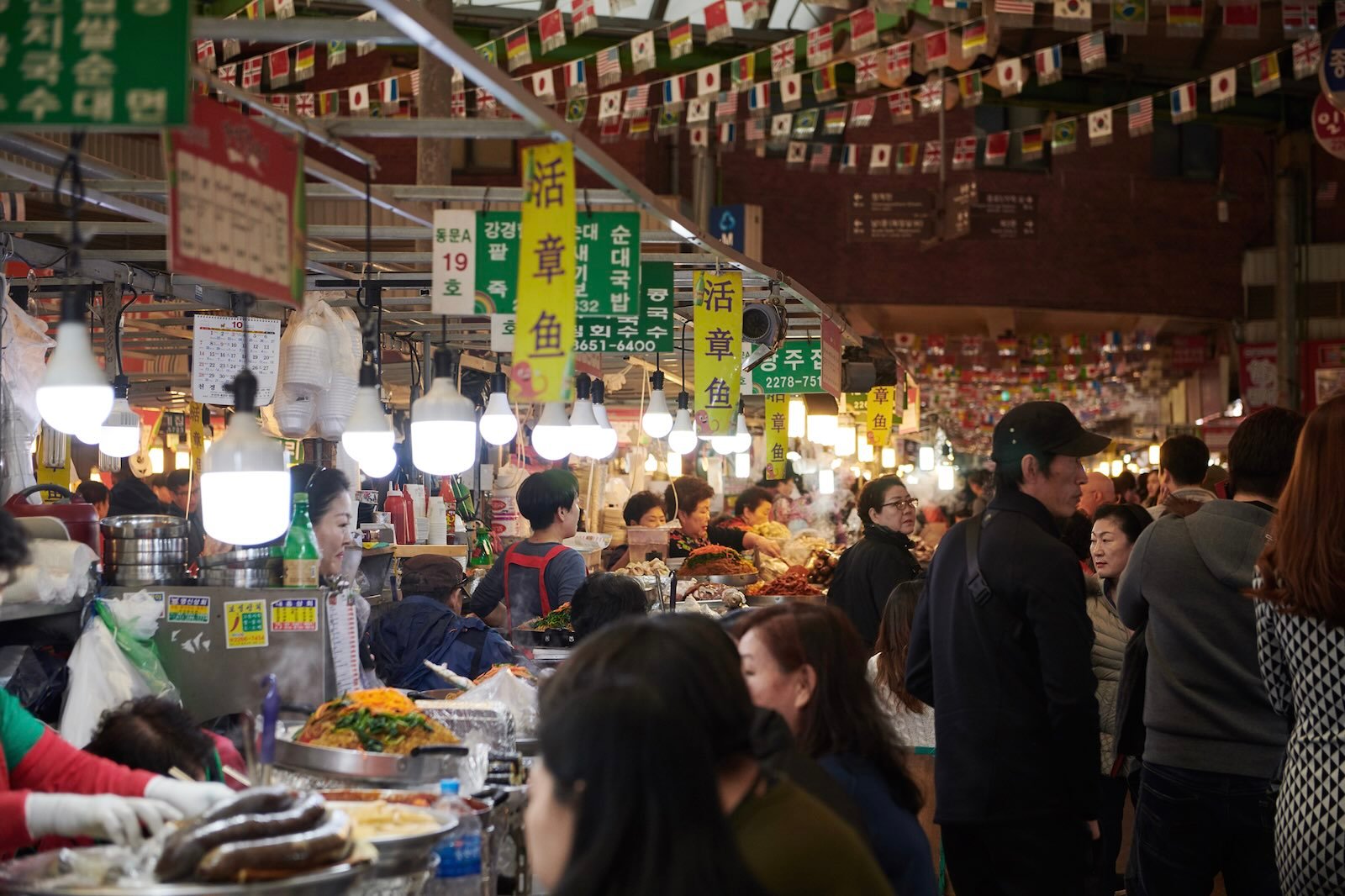
Located north of the Cheonggyecheon Stream, in the Jongno-gu district, Gwangjang Market is one of the oldest and busiest markets in the South Korean capital. Under its covered walkways, the warm glow of neon lights, the steam rising from pots, the quick hands of the cooks, and the constant flow of customers all contribute to a vibrant atmosphere — chaotic and perfectly orchestrated.
This iconic street food destination, where tourists and locals mix naturally, perfectly captures the energy and liveliness of Korean markets. It offers an ideal setting to film an authentic atmosphere and intense slices of everyday life.
4. Bukchon Hanok Village (북촌한옥마을) – The Charm of a Traditional Korean Village
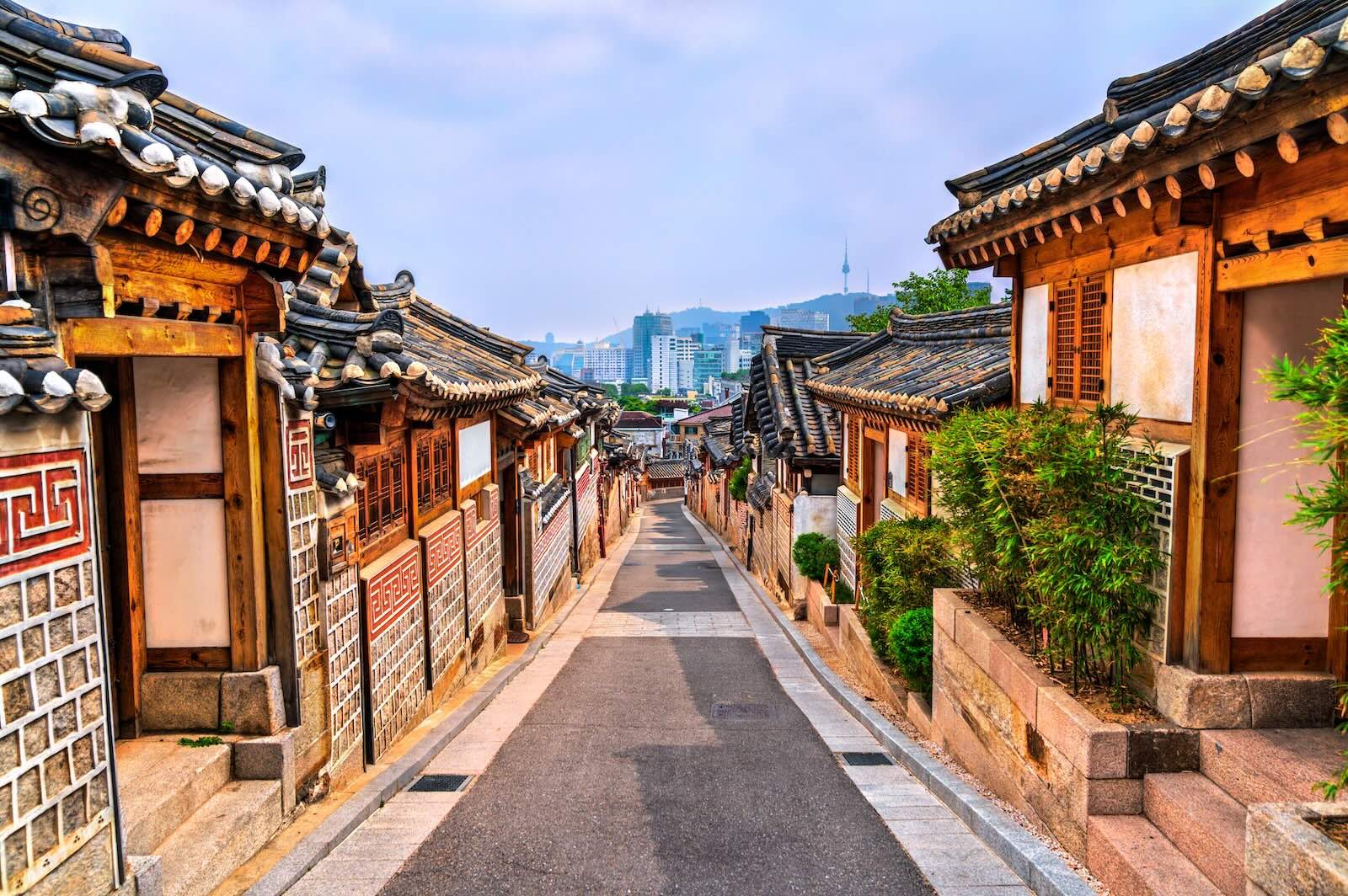
Bukchon Hanok Village is one of the few neighborhoods in Seoul where you can still see traditional Korean houses, known as hanoks. Located in the heart of the capital, the area features dozens of well-preserved homes that are still lived in today, lined with narrow stone-paved alleys and low stone walls.
The village’s gentle slope offers a variety of framing options and interesting visual perspectives — but be mindful of the restricted visiting hours set by the Seoul city government to protect the residents’ peace and privacy. It’s best to plan your shoot carefully, with proper location scouting ahead of time.
5. Gangnam Station (강남역) – The Urban Energy of Seoul’s Gangnam District
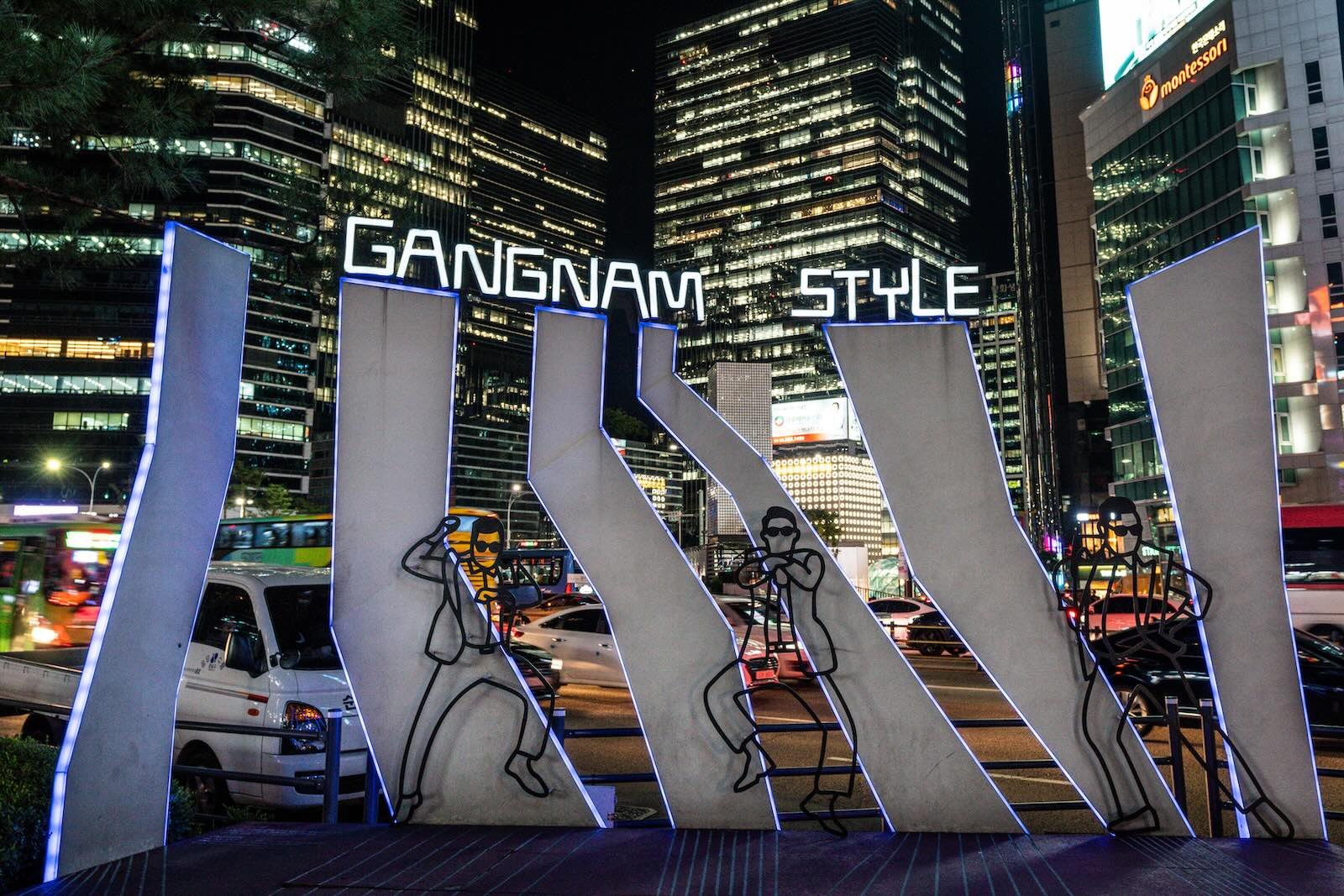
Located south of the Han River, Gangnam Station is one of the busiest and most vibrant hubs in Seoul. The district gained international recognition with the global success of the song Gangnam Style in 2012. It embodies a certain ideal of modernity, social success, and the fast-paced Korean lifestyle.
The area surrounding the station is constantly buzzing, day and night, attracting a young, active, and connected crowd. The buildings, massive LED billboards, office towers, shops, restaurants, and modern infrastructure all contribute to the neighborhood’s energetic rhythm. The flow of pedestrians and the glowing lights of the storefronts after dark make it a perfect spot for capturing dynamic B-roll footage. It’s an ideal location to film the urban energy of South Korea’s capital in a dense, fast-moving, and visually striking setting.
6. Gyeongbokgung Palace (경복궁) – South Korea’s Royal Heritage
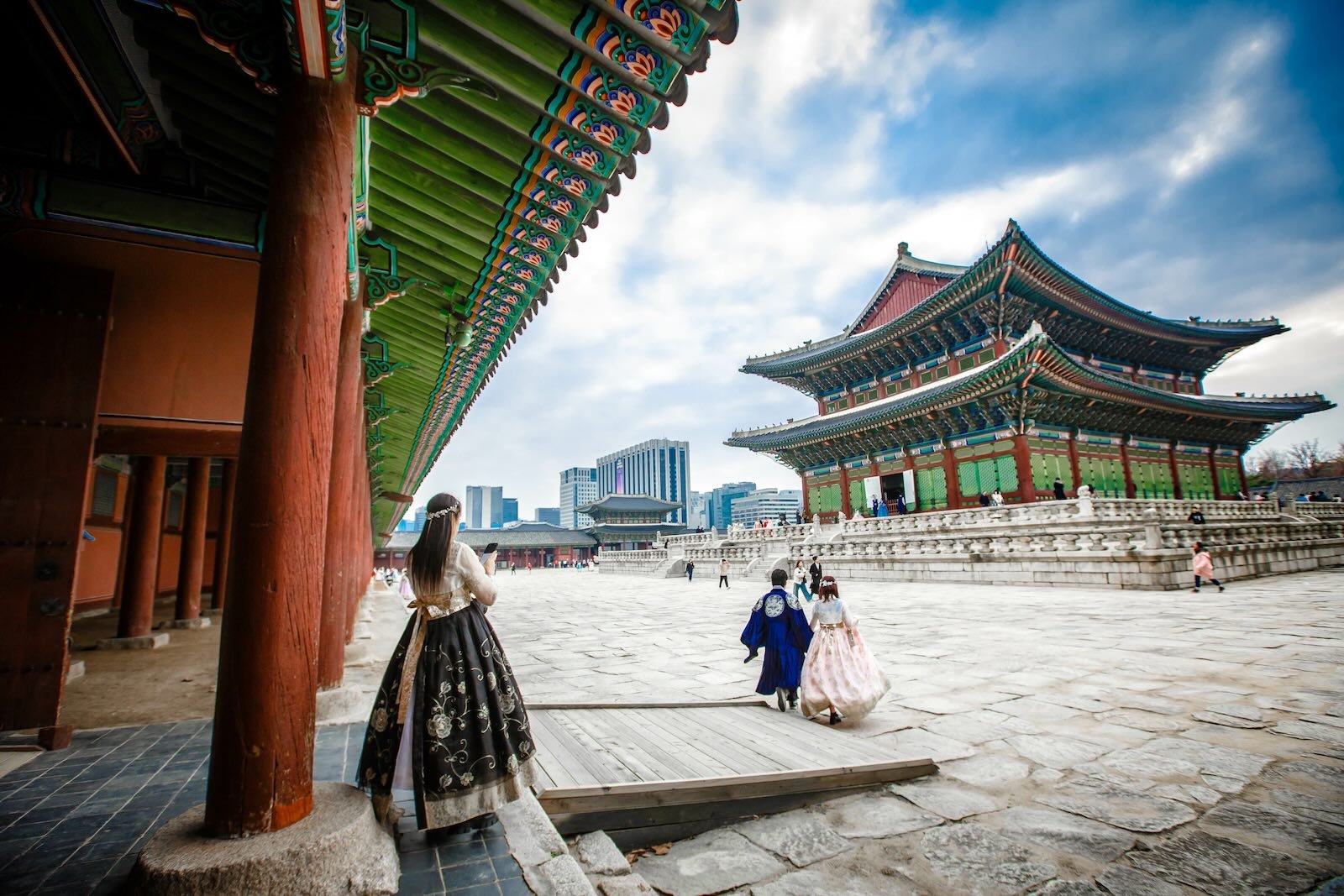
Gyeongbokgung Palace, located in the northern part of Seoul, is the oldest and most impressive of the five grand palaces built during the Joseon Dynasty. Although it was partially destroyed during the Japanese occupation, it has been extensively restored and now stands as a powerful symbol of the country’s historical resilience. With its wooden pavilions, traditional tiled roofs, and meticulously landscaped gardens, the palace embodies the full splendor of Korean royal architecture.
Its symmetrical layout with harmonious lines, the contrast between dark wood and light stone walls, and its colorful rooftops create a visually striking composition. One highlight not to be missed: the changing of the guard, which takes place several times a day at the main gate — a scene that adds rhythm and depth to your B-roll footage.
7. N Seoul Tower (N서울타워) – A Panoramic View Over the City
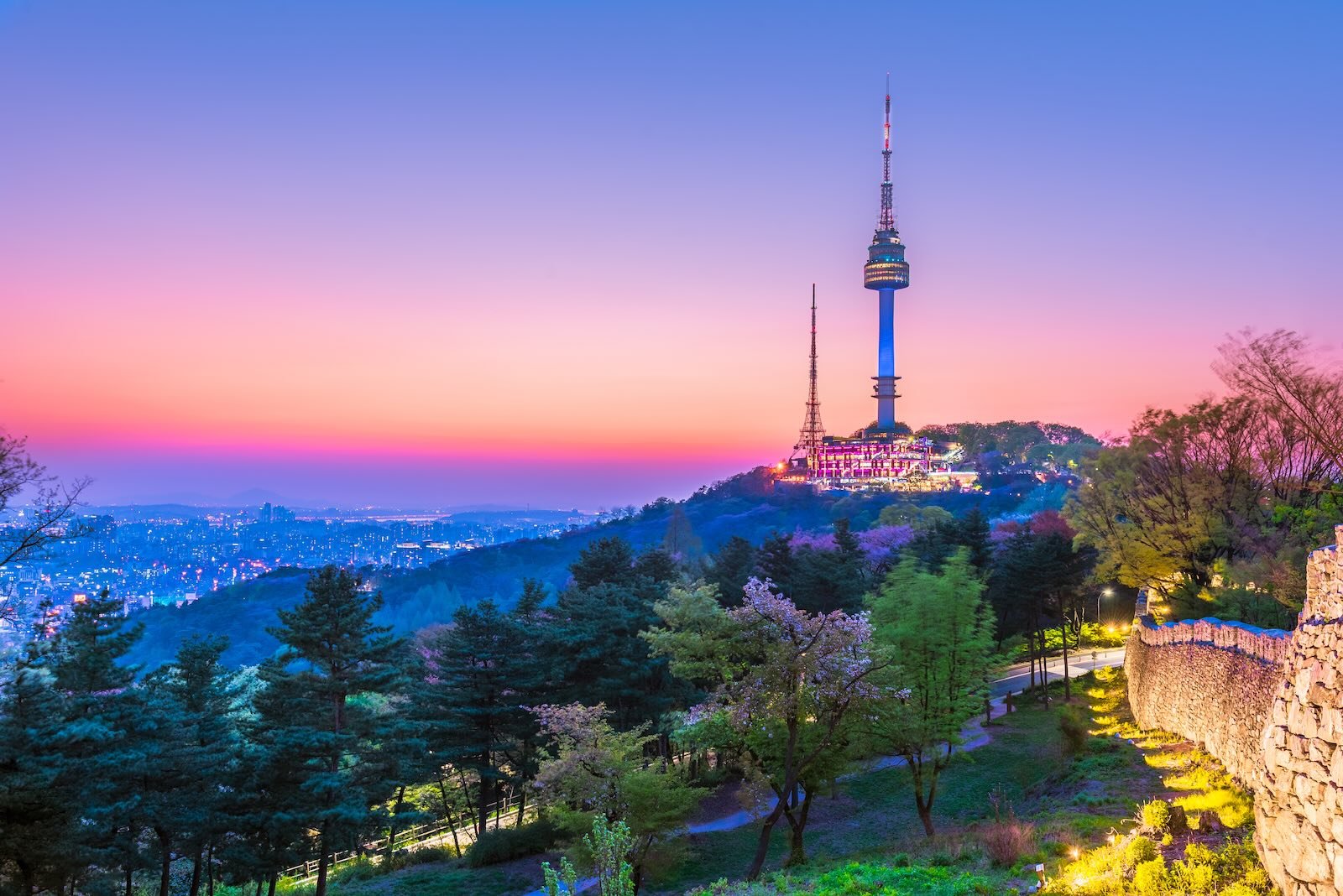
Located at the top of Mount Namsan, N Seoul Tower offers one of the most breathtaking views of the capital. Both a geographical and visual landmark, it can be seen from many neighborhoods and towers over the city with a 360-degree perspective. To reach it, you can walk through Namsan Park or take the cable car.
At the base of the tower, the observation deck allows for spectacular wide shots of Seoul. For optimal lighting conditions, plan your shoot during golden hour. On clear days, the view stretches all the way to the mountains surrounding the city, highlighting the vast scale of the city. The iconic love locks attached to the railings, along with the seasonal tones of the surrounding trees, provide rich visual elements that will enhance the composition of your shots.
8. Naksan Park (낙산공원) – A Stunning View Along Seoul’s Fortress Walls
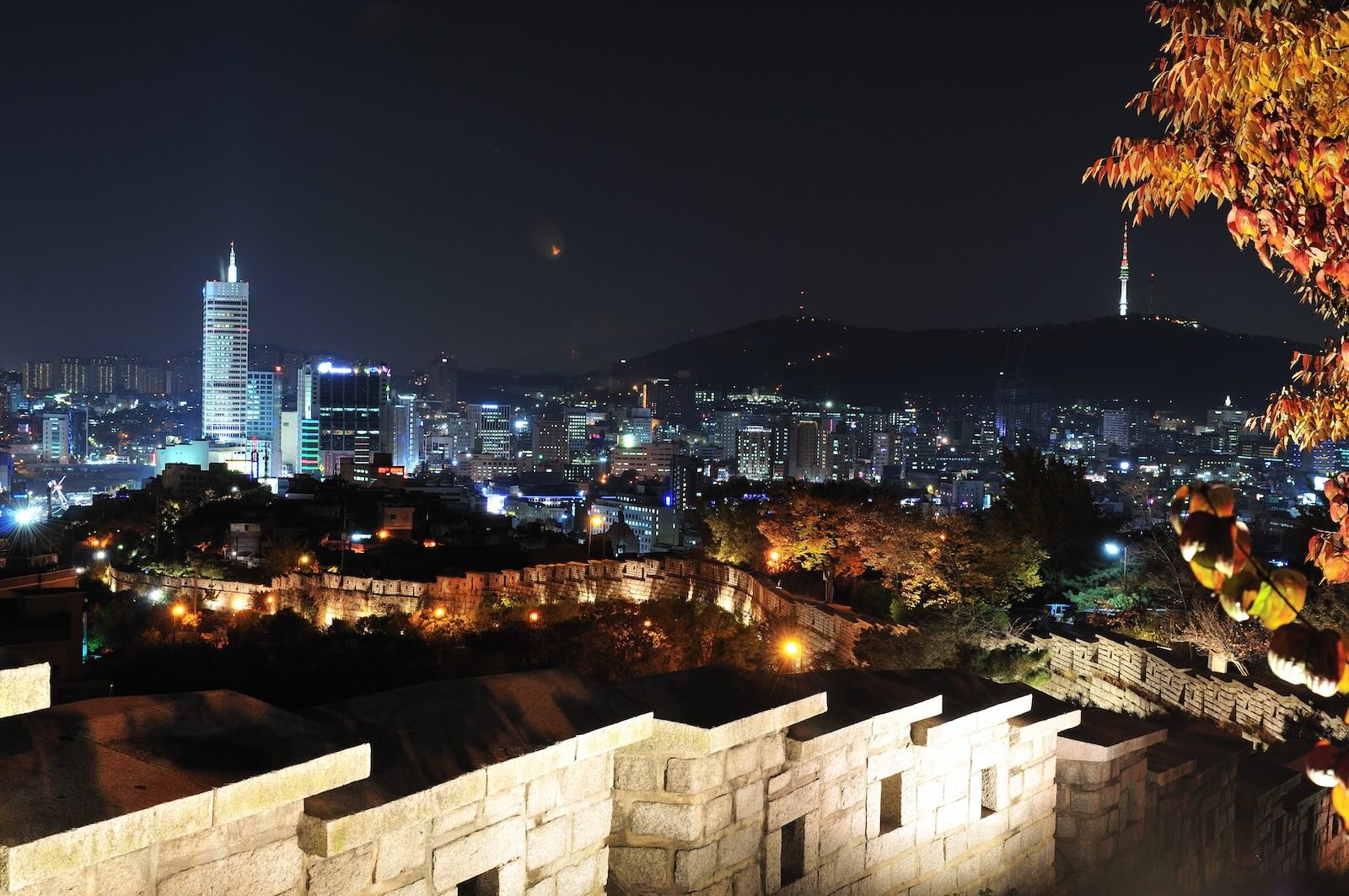
Naksan Park offers one of the most scenic views of Seoul, combining both historical and natural elements. Located in the Jongno-gu district, the park runs along a well-preserved section of the city wall built during the Joseon dynasty, alternating between shaded walkways and open panoramic views over the city.
The striking contrast between heritage and urban development — with the massive stone walls in the foreground and the cityscape stretching out behind — provides a powerful backdrop to capture the duality of tradition and modernity. From day to night, the setting lends itself to a wide range of visual moods.
9. Dongdaemun Design Plaza (DDP) – A Futuristic Architectural Masterpiece
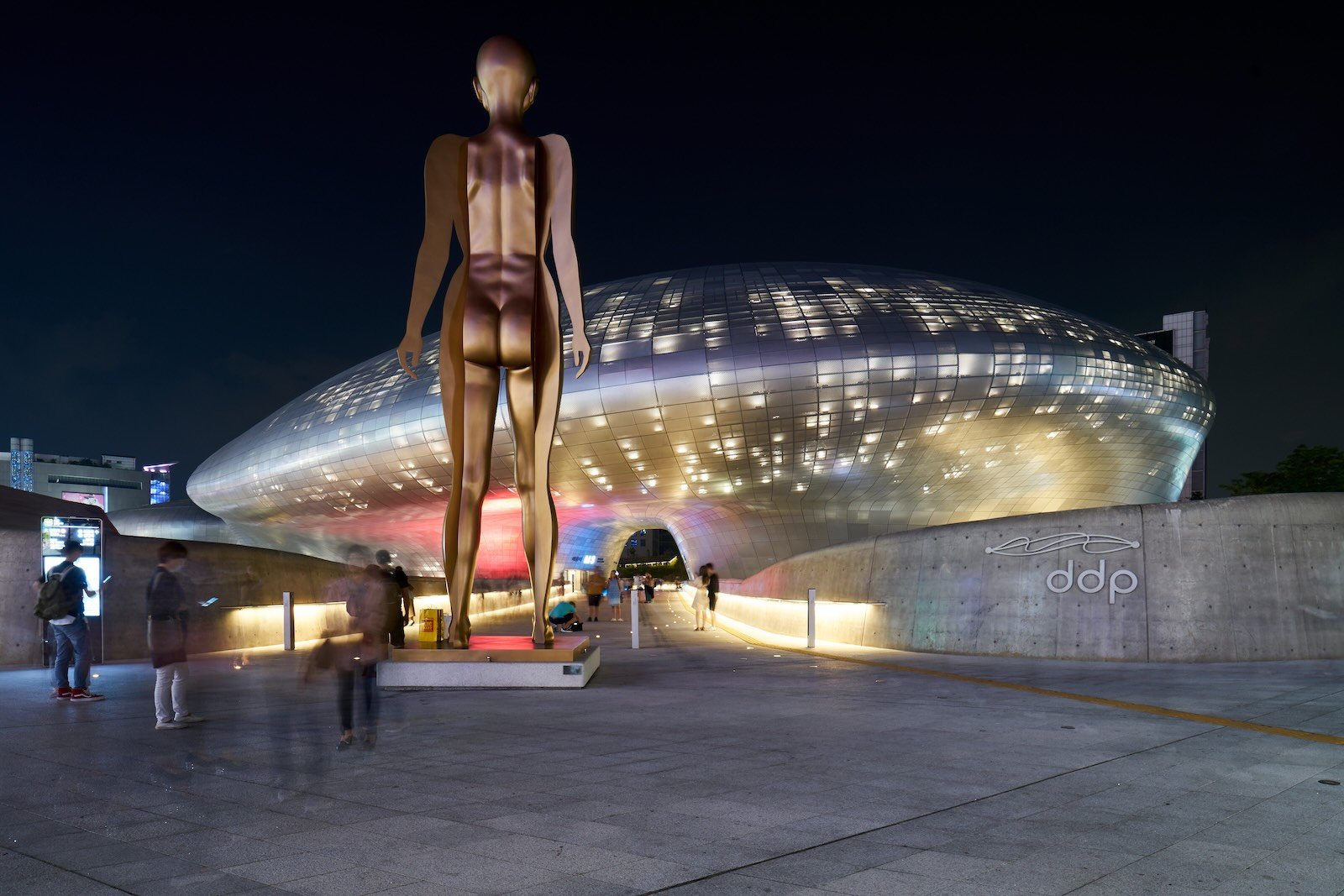
Located in the Dongdaemun district, the DDP is one of the most iconic examples of contemporary architecture in Seoul. Designed by the renowned architect Zaha Hadid, this futuristic, avant-garde “vessel” stands out with its organic structure, flowing curves, and thousands of metallic panels. The vast complex hosts exhibitions, fashion shows, and a wide range of events that reflect its creative energy.
With its futuristic lines and spectacular design, the DDP offers a visually striking backdrop, ideal for wide-angle shots and strong graphic compositions. Please note that the DDP is a restricted filming area, requiring prior authorization and the payment of a location fee.
10. Cheonggyecheon stream (청계천) – A Green Walkway Through the Urban Jungle
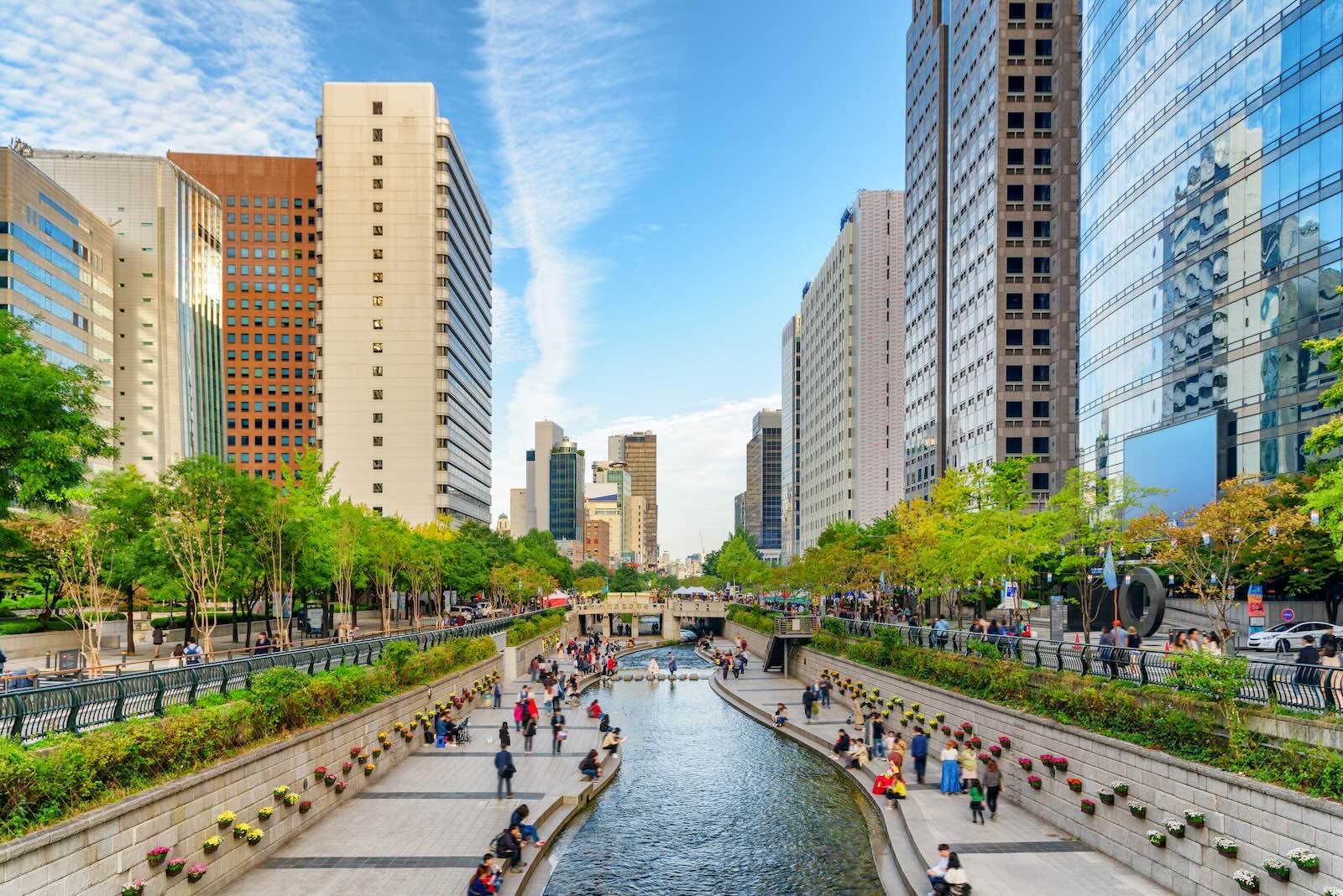
In the heart of Seoul, Cheonggyecheon is an artificial stream that stretches for nearly 11 kilometers across the city. Once buried beneath an elevated highway, it was restored in the 2000s to create a peaceful, walkable green corridor in the middle of the urban landscape. Winding between glass-and-steel buildings, the stream is dotted with small bridges and gentle waterfalls, offering pedestrians a refreshing and quiet escape.
The calming atmosphere of Cheonggyecheon contrasts with the bustle of downtown Seoul, making it a great location for a wide range of visual moods, both day and night. The stream’s length and the diversity of its surroundings are well suited for both static shots and moving shots.


